For me, there’s nothing better in lawn care than watching new grass seed grow. Whether it’s a newly seeded lawn as part of a lawn renovation or aerating and overseeding your existing yard, anticipating new young grass to emerge is exciting and a little primitive.
But one thing that can ruin the entire process is weed seeds. Preventing and controlling weeds from germinating and emerging from the start is important to the health of the new grass.
I’ll share how I prevented weeds in my new backyard in a few simple steps in this post.
New Grass Overview
The best weed prevention in any lawn is a thick and healthy turf. Taller, healthy green grass blades and established roots will begin to crowd out crabgrass, and most perennial weeds, and broadleaf weeds. A dense lawn is your best defense as it prevents bare spots which inevitably get filled by weed seeds. The thick grass can also “choke out” other lawn weeds.
New Lawn Timing
When you decide to seed your lawn is super important. The best time, by far, to seed a new lawn is in the late summer to early fall. For example, in New England, the best time is in early September. The days are shorter and more importantly, the outside temperatures throughout the daytime and overnight are much cooler, but the soil remains warm. This creates the ideal environment for the new grass to establish lush top-growth and develop deep roots.
There is also much less competition for annual weeds like crabgrass and other grassy weeds in the fall time. Newly seeded lawns have a much
The next best, and only time to seed your lawn is in the early spring. However, keep in mind that there are many variables here that are stacked against you:
- Risk of frost: Mother Nature can throw a curveball at any time, especially in the early spring. There’s always a risk of unexpected snow or frost – the frost which will severely damage and kill young grass.
- Rain washouts: April showers bring May flowers. Also, excessive rain can wash away your grass seed.
- Lack of rain: When I renovated my backyard in May 2020, we were at the beginning of a severe drought. No rain means water frequently with more irrigation – several times per day to keep the grass seed from drying out and preventing germination.
- Summer heat: Newly seeded grass needs extra time to develop strong, deep roots. This makes it very for spring-seeded grass to survive the summer months, and nearly impossile for sucessful seeding after May in most parts of the country.
- Fungus: With an increase in outdoor temperatures and humidity, late spring and early summer bring on fungus and dideases. Young grass
- Know when to apply crabgrass preventer
Grass Seed
Step one is finding the right grass seed. Whether it’s an established lawn or a newly seeded lawn, you want to choose grass seed with no weed seeds. Check the label of the grass bag – it will show the percentages of each grass seed variety (perennial ryegrass, Kentucky bluegrass, etc.).
Below is an image of the label of my GCI TTTF blend. As you can see, it only contains three types of grass seeds and no weed seeds.
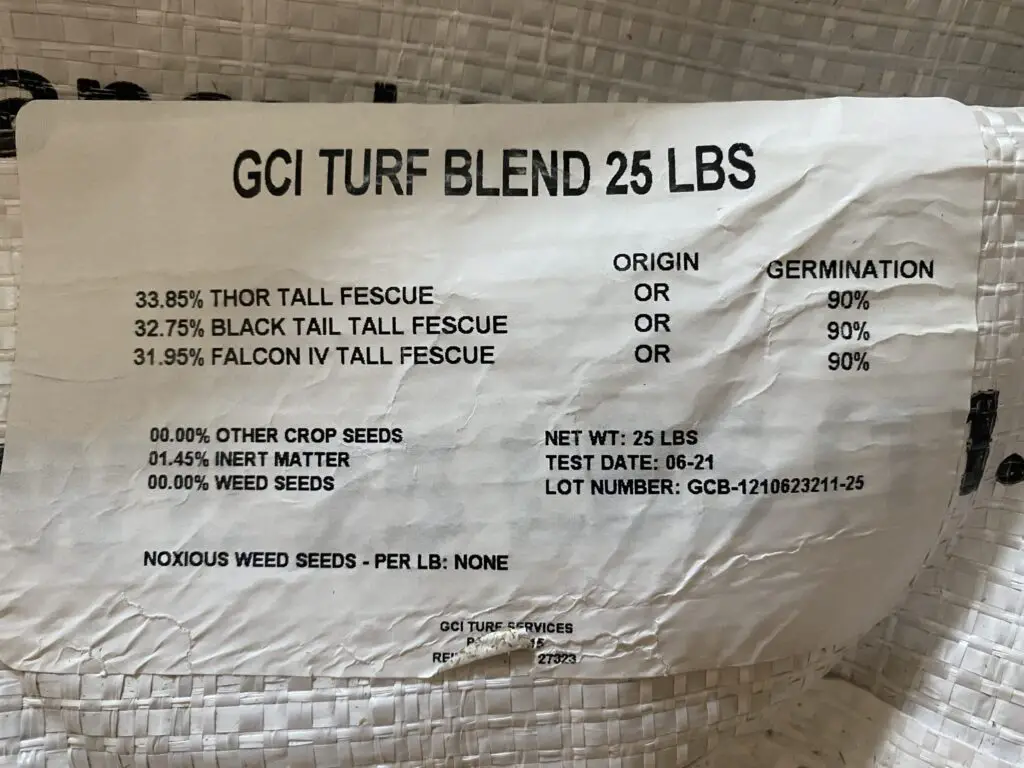
Control Weeds
The best way to prevent and control weeds at the time of seeding, with a selective herbicide, is by using Tenacity Herbicide as a pre-emergent. This contains the active ingredient, Mesotrione, and acts as both a crabgrass preventer and crabgrass killer.
How to use: Mix 1/2 teaspoon per gallon of water. Spray evenly across the lawn at the time of seeding (or within 3 days) and water in immediately with 1/4″ of water to infiltrate the soil. As always, please read the product label of everything before use.
Killing Weeds
Selective weed killers can also be used post-emergently.
Tenacity can be used as a weed killer on new lawns. However, you must wait until you have mowed your new grass at least twice before applying.
If Tenacity is used as a post-emergent, this selective herbicide uses the same mix rate (1/2 teaspoon per gallon) but will need the addition of 1 1/2 teaspoons of a non-ionic surfactant (NIS), and no watering. The NIS will allow the herbicide to coat and stick to the leaves of the plant to help accelerate the elimination of weeds.
Another herbicide is Quinclorac. This is my favorite selective herbicide because it can also be used on new turf, and will kill weeds like crabgrass and broadleaf weeds much quicker. Use a methylated seed oil for best results.
Be sure to read the labels on all lawn care products, particularly herbicides. Many weed killers and weed preventers cannot be used 2-3 months before or after seeding. The chemicals in these products will not only affect the germination on your new lawn but can also damage or kill your new grass.
Target the new weeds. Spot treat isolated weed problem areas versus broadcast spraying across the entire lawn.
Quinclorac label, page 11.

New Seed Fertilizer
Find a starter fertilizer with Nitrogen-Phosphorus-Potassium (NPK). You can find a great all-in-one starter fertilizer with weed preventer such as Scott’s Turf Builder For Seeding with Weed Prevention. This also contains Mesotrione and should provide 21-28 days of pre-emergent weed control.
Be sure not to buy anything else. If you see fertilizers with weed prevention such as a “Step 1”, or anything that contains Prodiamine (Barricade), Dithiopyr (Dimension), or Pendimethalin (Pendulum) then do not use on the new seed. This will prevent both weed seeds and your good grass seeds from germinating.
Pulling Weeds
I normally suggest not pulling weeds in new grass. Pull existing weeds before seeding, but hold off until the new turf has established deeper roots – this is the number one goal in lawn care. Weeds can always be addressed later, but you only get one shot at properly developing and growing new seedlings until next fall or spring. Pulling new weeds can, and will, also pull up the new seedlings.
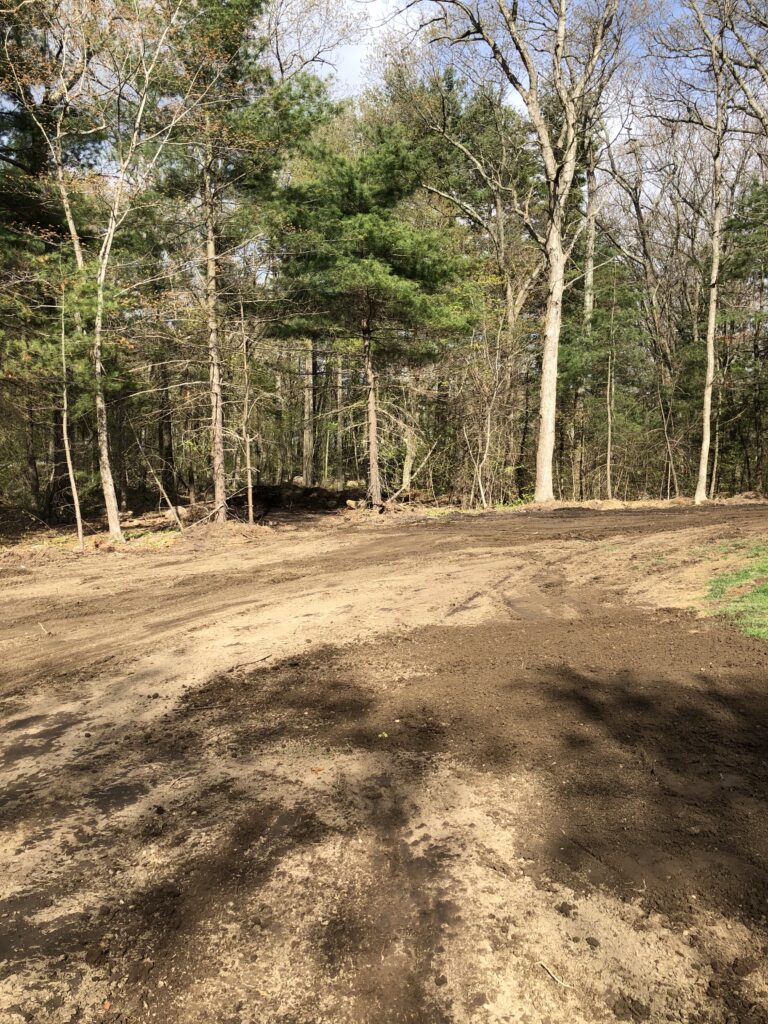
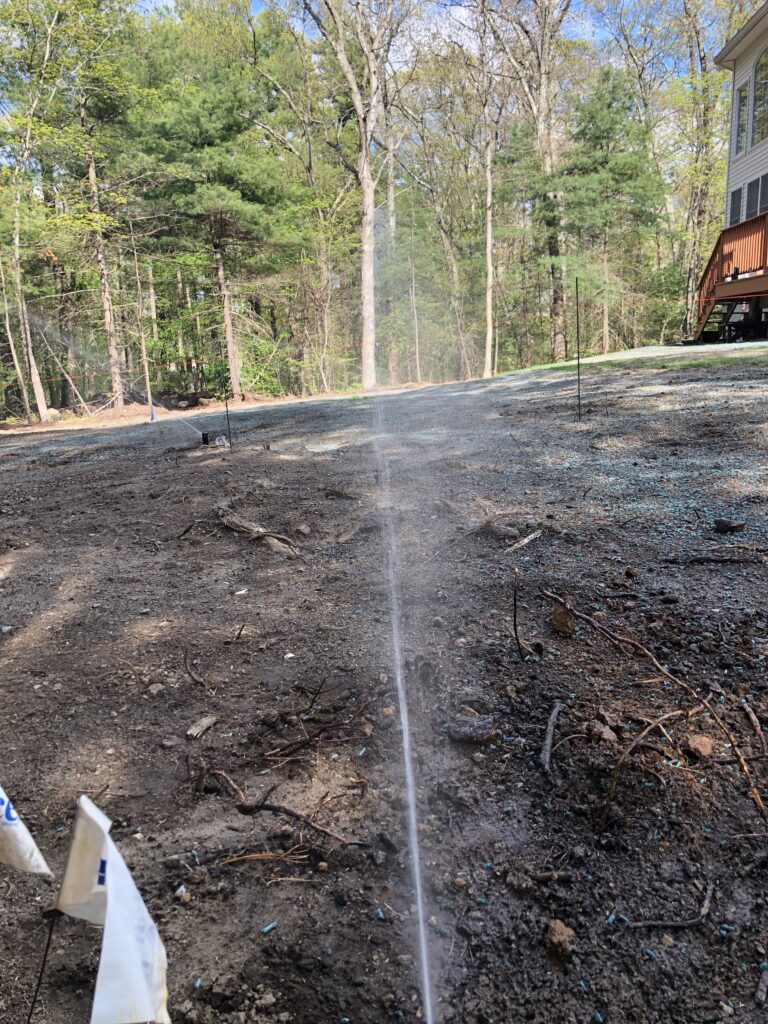
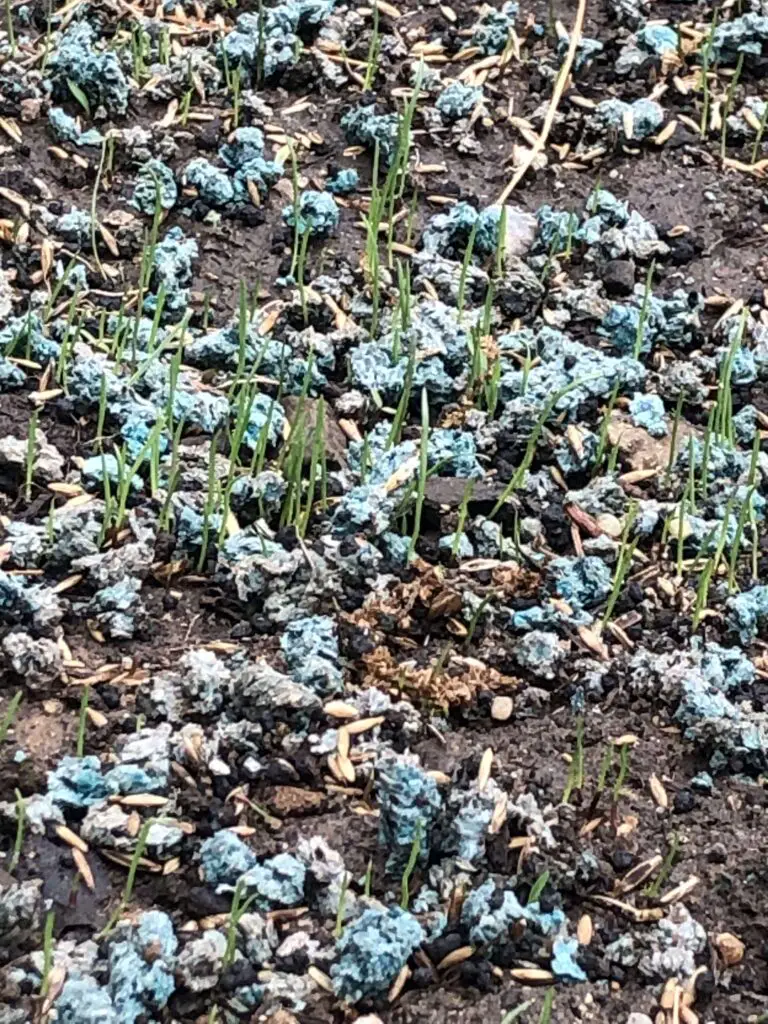

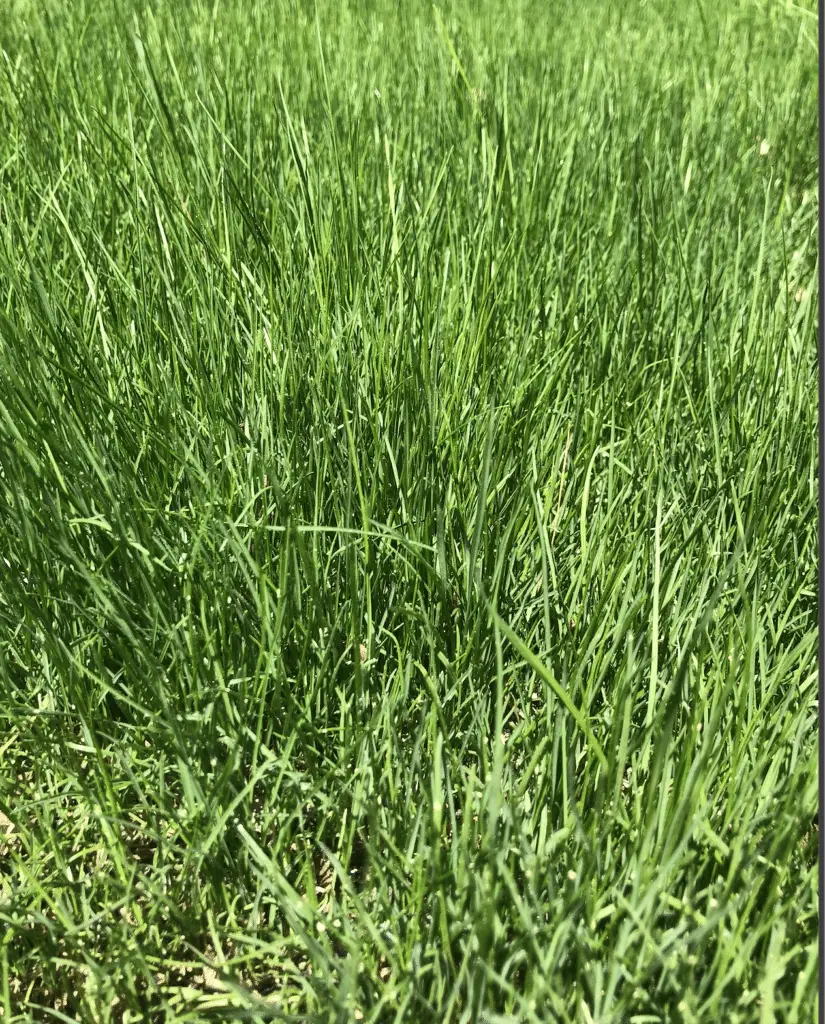

New Lawn FAQs
When can you spray weeds in a newly seeded lawn?
Weed killer herbicides such as Quinclorac and Tenacity (Mesotrione) can be applied to new lawns 28-30 days after emergence. A good general rule of thumb is to wait until you have mowed your new grass at least two times before spraying.
How do you prevent weeds in a newly seeded lawn?
The best way to prevent weeds in a new lawn is to apply a selective pre-emergent herbicide like Tenacity, or use an all-in-one starter fertilizer with Mesotrione, like Scott’s Turf Builder Triple Action.

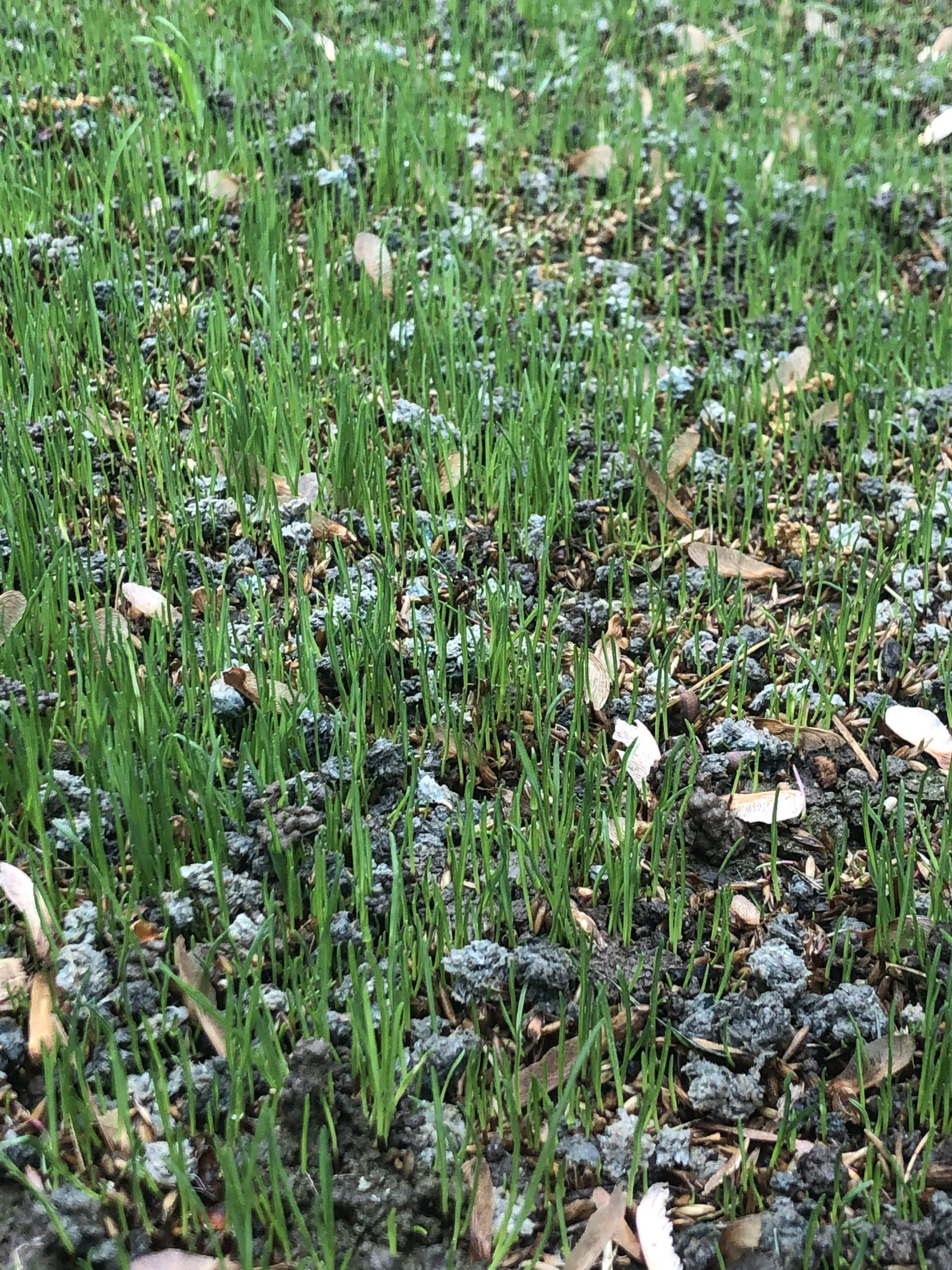
Great article. Last fall I put Tenacity down the day I dropped seed on a small reno and it worked like a charm.
Thanks, Jeff! Glad to hear it worked out well for you.
dear Mark, your guidance please , i have put new grass plugs in my yard, size about 0.8 acre, after how long time i can spray the 3 way max turf for weeds. thnk you Nick
Hi Nick. Generally herbicides should not be applied on new turf until it has been mowed a minimum of 3 times.